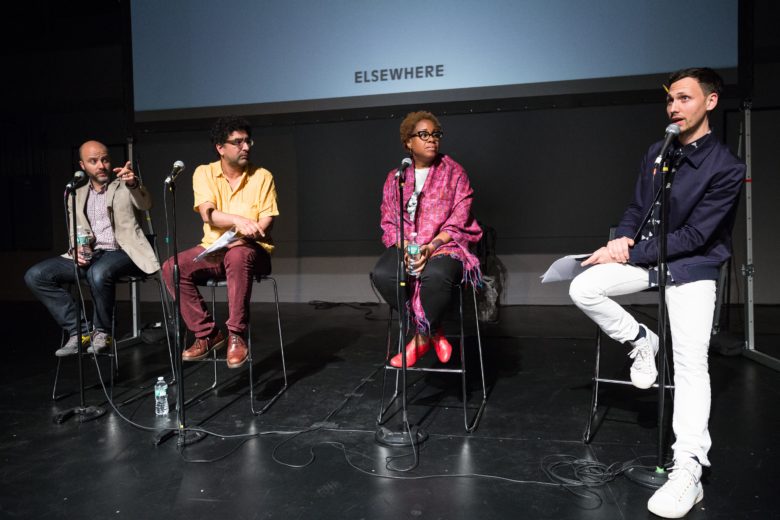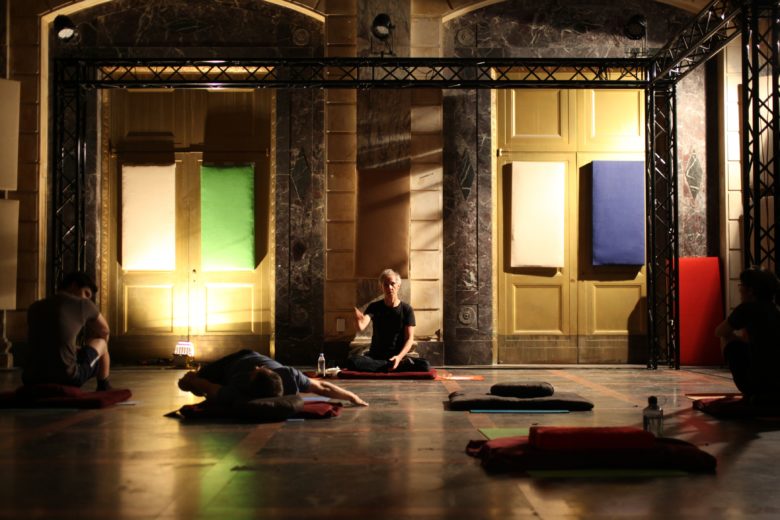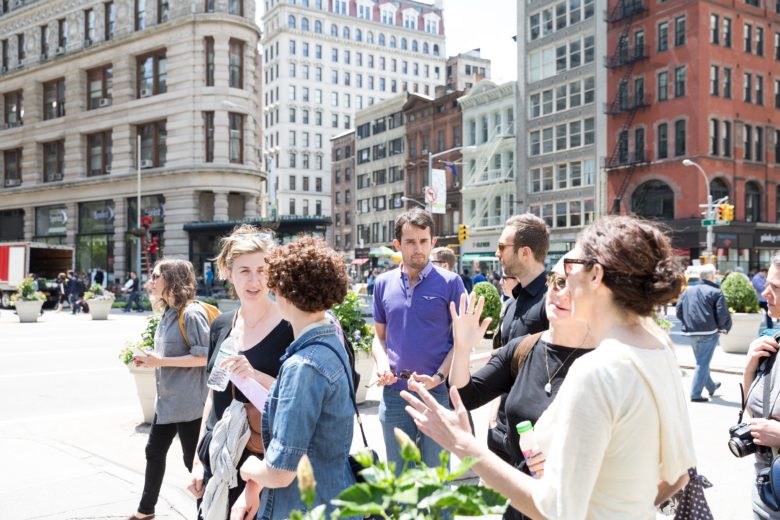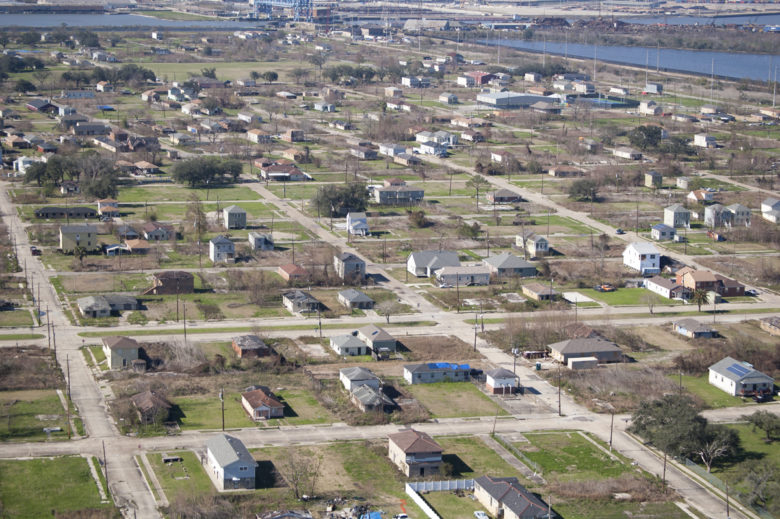“In the day-to-day experience of living in cities, you begin to think about what you tune out and what you are aware of,” said film programmer Paul Dallas, introducing four films screened by Van Alen and Times Square Arts as part of the Institute’s spring events series. The selected films explored the range of effects that shape our urban experiences—the unimaginable range of things that happen around us simultaneously. The discussion following the films—45 7 Broadway, A Cinematic Study of Fog in San Francisco, Lettres du Voyant, and The Human Scale—went a step further, investigating the profoundly anarchic and mysterious nature of cities.
Blending layers of time and experience using color filters overlaid with footage from Times Square, 45 7 Broadway (Tomonari Nishikawa, 2013) replicated the sensory quality of being in that cacophonous hub in Manhattan where everything is too much, happening right now, from every side.
“The layering is the one thing I thought was quite interesting about that film,” said Mabel Wilson, associate professor of architecture at Columbia University’s GSAPP and one of three guests invited for the discussion. “There’s something interesting about that as a kind of density—a kind of layering of temporality.” The time-based nature of video, she said, allows the medium to capture an otherwise indescribable, overwhelming experience.
Obscurity was central to the second film, A Cinematic Study of Fog in San Francisco (Andy Black and Sam Green, 2013). A quiet and considered take on that city’s famous climate feature, the film is slowly paced with intermittent fog horn blasts and narration by city residents sharing their experience with the fog: some call it “sinister,” while others call it an “atmospheric wilderness” that “denies that we can live apart from nature”—even in a dense metropolis.
“The one that really stirred me was the one about San Francisco and the effect of not seeing a city—but rather just being in it—which reminded me of the value of illegibility, of darkness,” said Sukhdev Sandhu, associate professor of English and social and cultural analysis at NYU.
The opaque and strange mood that Sandhu interpreted in the fog extended into Lettres du Voyant (Louis Henderson, 2013). Structured around the practice of Sakawa in Ghana—the mining of discarded hardware for personal information to use for internet scamming—the hybrid fiction-documentary explored the socio-political histories and age-old spiritual rituals that are intertwined with the country’s mining tradition.
“One of the things that film does is make visual a metaphysical space,” Dallas commented. “We now live in two different cities—the physical city and the digital city. And when you’re walking down the street, our sensory experiences are also dominated by being elsewhere constantly—mentally.”
The final showing of the evening, The Human Scale (Andreas Dalsgaard, 2012), explored Danish architect and urban designer Jan Gehl’s ideas and influence on public space around the world. The film explored the near-future gigacities of China, extreme traffic jams in Bangladesh, and Gehl’s first-hand influence in New York’s Times Square, the effects of which are now being made permanent by Norwegian architecture firm Snohetta. In the film, Gehl recognizes the uncontrollability of urban spaces and calls the idea of a master plan ridiculous, adding, “We can invite people to sit, to stay. That’s all we can do.”

During the discussion, Jeff Risom, partner and head of Gehl Institute at Gehl Architects, spoke similarly of the huge investment in the Times Square renovation: “I wonder if it’s better to have structures that are permanently temporary, where it’s okay to mess them up and change the program.” The Gehl approach, he explained, is less about improving public space in an architectural sense, and actually “about changing the mindset, providing the canvas in which things like snowball fights could occupy public space.”
From an impromptu snowball fight in a public plaza to a blanket of fog or a credit card transaction on the Internet, these activities are all part of the unseen, cacophonous, infinite layers of a city. As the evening progressed, the question of wildness continued to reemerge, finally turning toward who, exactly, should be charged with mastering the city. But what about submitting to it, as Risom asked the group: “Are we better served by keeping it rough and gritty?”


